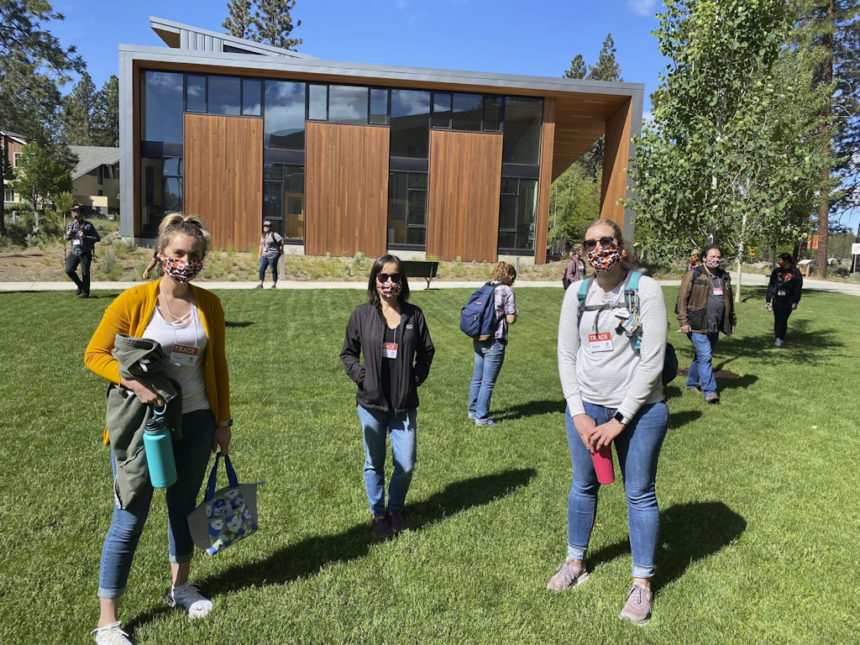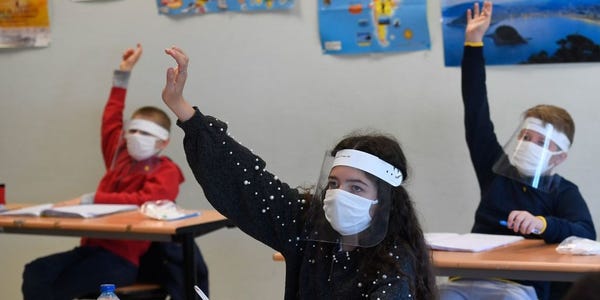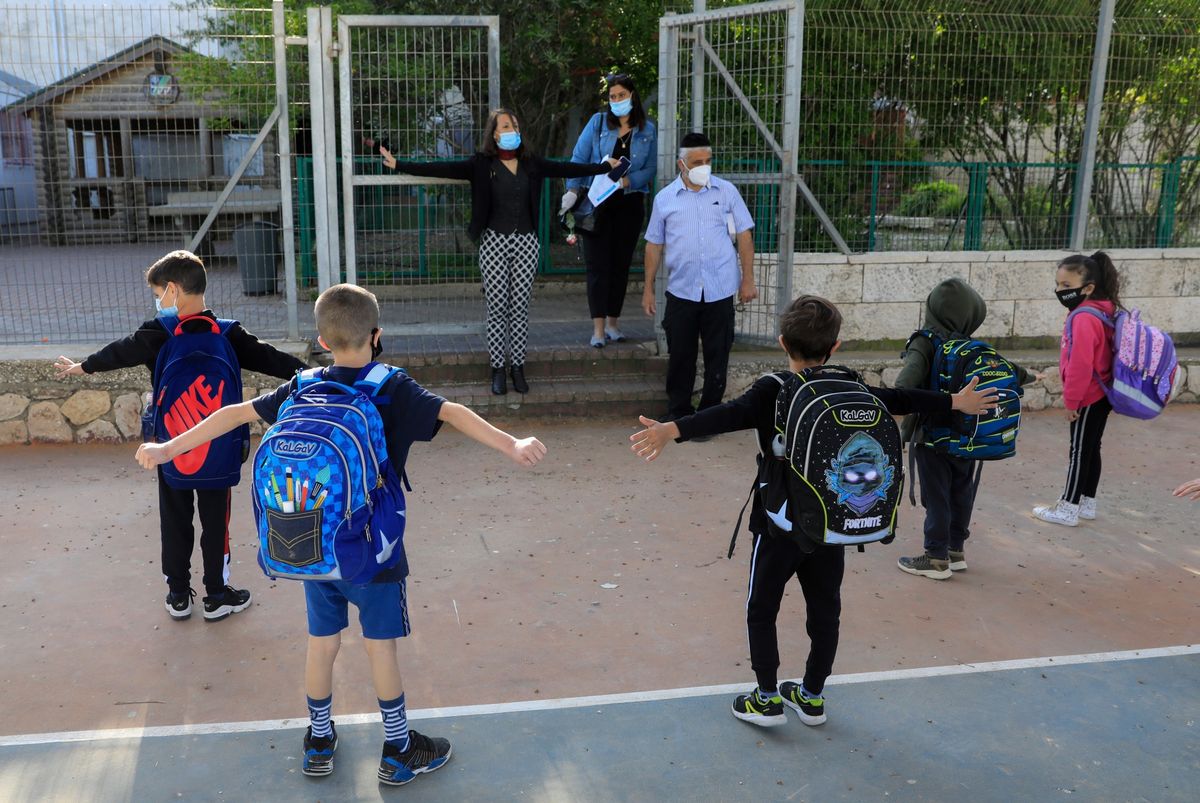Some U.S. colleges have been rolling back their campus reopening plans in recent weeks, but many of them are seeing high numbers of COVID-19 cases among students, just days into the fall semester.
In Europe, governments tried to reopen schools so that in-person teaching would restart in autumn, yet the planned reopening could not come at a worse time with many European countries, like Spain and Germany, experiencing a spike in coronavirus cases. Some schools had to close their doors again, due to a rise in coronavirus cases.
French schoolchildren will be returning to school on September 1 to start the new academic year, and Britain's education minister Gavin Williamson said on Wednesday that it will be mandatory for pupils to wear face masks in communal areas of secondary schools in England in places with local lockdowns, after a government U-turn on enforcing their use.

Ohio State University students and alumni assisted health care workers in a neighborhood COVID-19 sampling project. /OSU website
Ohio State University students and alumni assisted health care workers in a neighborhood COVID-19 sampling project. /OSU website
Positive COVID-19 test results across campus
U.S. colleges are experiencing a spike of COVID-19 cases at the starting point of the new school year.
Students at the University of Alabama on Monday reported more than 550 people across its campuses had tested positive for COVID-19 since it resumed in-person classes on August 19.
The main campus in Tuscaloosa was one of the affected areas as the list of infected included members from faculty, staff and student body. Citing a "dramatic increase" in coronavirus cases on campus, the mayor of Tuscaloosa issued an executive order on Monday ordering bars to shut down for 14 days and placing restrictions on other establishments.
The university has conducted more than 46,000 tests, according to a dashboard it released this week, and the rate of positive cases stood at about 1 percent. The number of positive cases does not include the 400 students who tested positive upon returning to the University of Alabama campuses before classes began last week.
However, Alabama is not alone in scrambling to deal with COVID-19 college outbreaks. The University of Southern California (USC), which resumed classes almost entirely online on August 17, on Monday said that more than 100 students at the University Park Campus in Los Angeles were in a 14-day quarantine after exposure to the virus.
In the Midwest, Ohio State University, where classes resume on Tuesday, issued more than 200 interim suspensions for students following a string of large parties where health and safety rules were largely ignored, according to media reports.
Last week, the University of North Carolina at Chapel Hill canceled in-class instruction after positive cases of COVID-19 shot up dramatically.

Face coverings should be worn in schools in places facing restrictions to curb the spread of COVID-19. /AFP
Face coverings should be worn in schools in places facing restrictions to curb the spread of COVID-19. /AFP
Europe sees students return to classrooms
In France, schoolchildren are returning to school on September 1. There will no longer be a limit on class sizes, and distancing is not compulsory in situations where the school can't fit all of its pupils. But the use of masks is compulsory indoors for staff and students over the age of 11. Floors, desks and surfaces that are touched regularly, such as door handles, must be cleaned and disinfected at least once a day.
In the UK, ministers that had ruled out the need for pupils to wear masks in corridors despite updated advice from the World Health Organization (WHO), have now backtracked and said face coverings should be worn in schools in places facing restrictions to curb the spread of COVID-19.
"There are some areas of the country where we have had to do local lockdowns and we think it is right in those few areas that in secondary schools, in communal areas, that youngsters do wear face coverings," Britain's education minister Gavin Williamson told media.
Williamson, who apologized after an algorithm-based exam system saw swathes of pupils awarded lower-than-expected grades, said the shift on masks had come following the change in WHO advice.

A school principal demonstrates how to maintain social distancing at an elementary school in the suburbs of Jerusalem on May 3, 2020. /AFP
A school principal demonstrates how to maintain social distancing at an elementary school in the suburbs of Jerusalem on May 3, 2020. /AFP
As for Italy, schools are due to return on September 14 as planned. As per the government rules, students need to be seated one meter apart so class sizes will be smaller. Both students and teachers will have to wear masks, and teachers will wear face shields if necessary. Lessons will be held outdoors where possible or in big spaces like theaters or museums.
Germany's and Spain's schools are opening at different times in different regions. Germany's 16 states have all agreed in July that children should return to schools once the summer holidays were over. And in Spain, some pupils have returned to schools since late May on a voluntary basis. In September, all students will return to classrooms as the government has issued guidelines that will be adapted in Spain's 17 autonomous regions.
(With input from agencies)